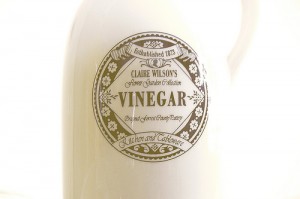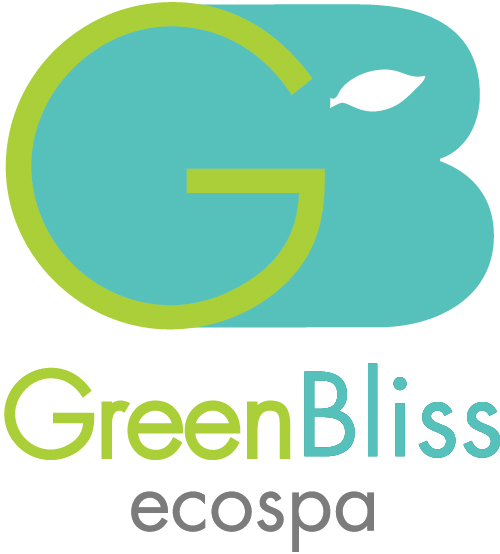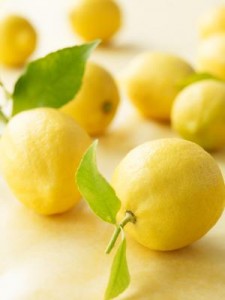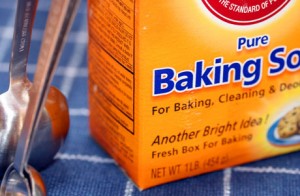The Zen (and Green) Of Spring Cleaning
 One of my favorite retreat locales is the Zen Mountain Center in Idyllwild, California. When teaching, I led several years of yoga retreats there, and have since regularly visited on my own. High in the San Jacinto Mountains that ring the Palm Springs desert area, this retreat center is the very model of Zen simplicity in action. It was here that I was first exposed to the aesthetic of Zen housekeeping.
One of my favorite retreat locales is the Zen Mountain Center in Idyllwild, California. When teaching, I led several years of yoga retreats there, and have since regularly visited on my own. High in the San Jacinto Mountains that ring the Palm Springs desert area, this retreat center is the very model of Zen simplicity in action. It was here that I was first exposed to the aesthetic of Zen housekeeping.
The Zen Center is on a well system, so water is very precious and conservation is of utmost importance. Additionally, there are prolonged dry spells in the weather, when things can get very dusty. The approach to keeping things clean, is gentle, laid back, and pursued, like all things Zen, as a ritual part of the spiritual practice.
Most everything we do in life is really just tasking, so why not approach all tasks as equal to each other in their importance? Cleaning can be meditation in action, just like praying. A ritual to tidy up your space, purify and bless it, can be made with each cleaning session you undertake. Using non-toxic, chemical free cleaning solutions is also the very soul of a sustainable home ritual.
Green Spring Cleaning Solutions
These are the essential products to have in your green home cleaning cupboard. They are cheap, natural and easy to buy:
- Baking Soda – Natural deodorizer and lightly abrasive.

- Lemon Juice – Wonderful de-greaser, deodorizes.
- White Distilled Vinegar – all round great cleaner.
- Grapefruit Seed Extract – Has amazing antibacterial and antimicrobial properties, making it indispensable.
- Salt – Super cleaner and degreaser.
- Liquid Soap – Read the label carefully. The contents should be olive oil, vegetable oil or glycerin based. Kinder to you and the environment.
- Essential oils. For natural air fresheners they are unsurpassable. Additionally, lavender and tea tree oil have antiviral, antifungal and antibacterial properties. Try to use organic if possible. Please note: Essential oils must be used with caution. They should never be ingested, and for the most part should not be applied directly to the skin.
Some good, all purpose recipes for making your own cleaners:
Baking Soda
- Mix ¼ cup baking soda in a spray bottle of water to use as general cleaner.
- The next time you do laundry, try adding 1/2 cup to a cup to your load to deodorize.
- Before you vacuum, sprinkle it on your carpet as a deodorizer.

Antifungals/Disinfectants
To keep mold at bay and to disinfect countertops and toilets, add 1 or 2 teaspoons of tea tree oil to 2 cups of water in a spray bottle, or 20 drops of grapefruit seed extract to 1 quart of water.
No-Streak Glass Cleaner
For sparkling mirrors and windows, combine 1/4 cup undiluted white vinegar, 1 tbsp cornstarch, several drops of your favorite essential oil scent, and 1 quart warm water. For a streak-free shine, wipe dry with a sheet of crumpled newspaper or a coffee filter. (cloth and paper towels will streak)
Tile and Grout Paste 1 cup water and 3 cups baking soda mixed into a paste works great for cleaning tile and grout. Use a toothbrush to scrub the paste into grout.
All Purpose Cleaner
Fill a water spray bottle with half water and half vinegar. Add 4 or 5 drops of lemon and eucalyptus essential oil. Lemon and eucalyptus essential oils are naturally antiviral, antibacterial and anti-fungal. It leaves the walls, benches, floors and surfaces smelling great. And, vinegar of course is great for zapping germs and bacteria.
Wood Floor Cleaning Solution
- 1/2 cup distilled white vinegar
- 1 tsp. vegetable glycerin
- 20 drops lemon essential oil
- Water
Combine all ingredients in a 20 oz. spray bottle. Spray, mop as usual, and quickly buff dry to protect your floors.
Furniture Polish recipe
Mix together ½ cup olive oil to ¼ cup lemon juice. I like to add a couple of drops of lavender oil to this mix for a great smell. Rub in a small amount to the wood surface and then wipe clean with a soft dry cloth. Lovely shine with a hint of lavender.
Lemon Laundry White Brightener
Add ½ – 3/4 c. of lemon juice to the rinse cycle in your washing machine when doing a load of whites and see them brighten up
Clogged drains
Pour a ½ box of baking soda followed by 1 cup of vinegar, then chase with a tea kettle full of boiling water. Take care to protect your eyes as the solution will bubble and foam and might spit.
Antique linens (tablecloths, curtains, napkins, etc.)
Spray stains with a mixture of 1 tsp of peroxide and 1 cup of water.
Silver polishing
Eliminate tarnish by rubbing a dab of toothpaste with a soft cloth on the silver object.
This works fabulously on silver jewelry as well.
Why Clean Green?
Many of the antibacterial products heavily marketed and expensively packaged for consumers, clean no better than soap and water. They can also breed some forms of “super bacteria” that become resistant to regular cleaning with soap and water. A key component of many anti-bacterial soaps and cleansers is triclosan. Studies have increasingly linked triclosan to a range of health and environmental effects, from skin irritation, allergy susceptibility, and dioxin contamination to destruction of fragile aquatic ecosystems. The contents of many chemical cleaners leave residues on surfaces and toxins in the air, and then later leach into the environment and ground water.
Here are some common major brand cleaning ingredients and their potent effects on human health:
Ammonia: Eye and lung irritant, dangerous and poisonous when mixed with bleach.
Formaldehyde: Intense irritant and suspected carcinogen.
Hydrochloric Acid: Can burn skin and is a severe digestive irritant if swallowed. Subtle and dangerous.
Sodium Hydroxide (Lye): Poisonous and corrosive, fatal if swallowed.
Paradichlorobenzenes: Highly irritating to mucous membranes, very toxic.
Butyl Cellosolve: Easily absorbed by the skin, and can cause harm to liver, kidneys and nervous system.
Ethanol: An alcohol, extremely flammable, and if ingested can cause severe digestive upset, nausea, vomiting and even death.



Recent Comments